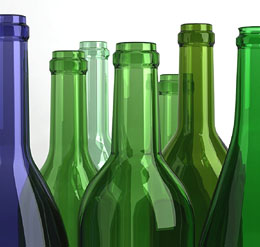 Your role as a home winemaker doesn’t stop until you’ve put that bottled wine to bed. It’s important to keep your focus all the way to the very end of the process without skipping any steps that you may think are not important, but all that hard work you put into making that wine could all be for not if you are complacent about the final steps.
Your role as a home winemaker doesn’t stop until you’ve put that bottled wine to bed. It’s important to keep your focus all the way to the very end of the process without skipping any steps that you may think are not important, but all that hard work you put into making that wine could all be for not if you are complacent about the final steps.
Even though it’s just about the last step and you’ve been so patient up until now, bottling is just as important as any other step during the home winemaking process. You’ve been very diligent about sterility and cleanliness up until now, so why stop now? Regardless of whether or not you are using new wine bottles or recycling old ones, it’s important to take the time to clean and sanitize your wine bottles, as putting your homemade wine into a dirty bottle is a recipe for disaster.
The only equipment you really need is a bottle washer, a bottle brush, and a bottle tree (and soap, of course). The bottle washer shoots a very strong blast of water into your bottles, which is perfect for removing soap residue or other solid particles. It has a garden hose-type thread on the end so you can easily attach it to outside faucets or laundry faucets. If you need to attach it to a kitchen faucet-no problem! Just purchase the handy “kitchen faucet thread adapter”!
The bottle brush is pretty self-explanatory: you need a skinny brush that will fit into the neck of a bottle in order to clean any soap or solid particles off the insides of your wine bottle. Once you’ve given your bottle a final rinse with the bottle washer, you can hang it on the bottle tree to drain and dry.
For both recycled and new wine bottles, you want to give them a good rinse in hot soapy water. For recycled bottles, it’s important to use the bottle brush, as there could be solid particles left behind from the previous wine. For brand new wine bottles, you probably don’t need to use a bottle brush, since the only likely thing in the bottle after shipping to your home is cardboard dust, and that will come right out with a good rinse.
Of course, it never hurts to use the bottle brush, so if you’re worried about it, brush away! Finally, give all wine bottles a good shot of the bottle washer/jet and let dry on the bottle tree. Keep in mind, if there are any labels on your old bottles, you’ll want to soak them in hot water and scrap off the label bits!
Once you have the wine bottles soapy clean, it is time to give them a quick sanitizing bath. It’s fairly easy, and it’s quick. There are many products you can use to sanitize these bottles, but one I’m partial to is Basic A. The reason being, it is a no-rinse cleaner. All you need to do is dip the wine bottles in a solution of Basic A, then allow them to air-dry on the bottle tree. The actual sterilization happens as the solution evaporates from the bottle’s surface. Once the wine bottles are drained and dried, you are ready to go.
Cleaning and sanitizing your wine bottles is an important step in the winemaking process and one not to be glossed over. It’s just as critical to the quality of the wine as any of the other steps performed along the way, so don’t waste all your previous efforts by not giving due-diligence to a step that can have such a critical effect.
———————————————————————————————————
Ed Kraus is a 3rd generation home brewer/winemaker and has been an owner of E. C. Kraus since 1999. He has been helping individuals make better wine and beer for over 25 years.

I have tryed to get a list of wine bottles you have availiable. I will find them on your list of available products and than they disappear. Can you help me?
Dale, sorry you were have an issue with the website. The following link should take you directly to our wine bottles:
http://www.eckraus.com/wine-making/wine-making-supplies/wine-bottles/